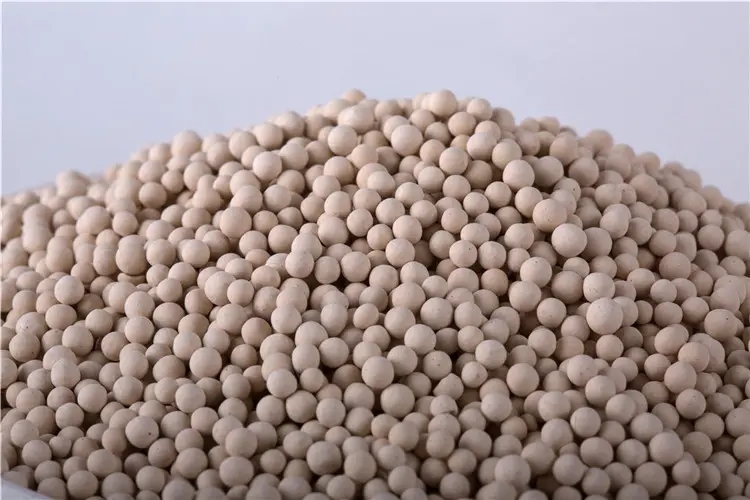
Honeycomb zeolite molecular sieve A synthetic hydrated aluminosilicate with molecular screening function ( Zeolite froth ) Or natural zeolite. The general chemical formula is (M′2M)O·Al2O3·xSiO2·yH2O , M′ 、 M They are monovalent and divalent cations, such as K+ 、 Na+ and Ca2+ 、 Ba2+ Etc. It has many uniform pore size channels and orderly arranged holes in its structure. Molecular sieves with different pore sizes separate molecules of different sizes and shapes. according to SiO2 and Al2O3 Molecular sieves with different pore diameters can be obtained with different molecular ratios. The models are: 3A( potassium A type ) 、 4A( sodium A type ) 、 5A( calcium A type ) 、 10Z( calcium Z type ) 、 13Z( sodium Z type ) 、 Y( sodium Y type ) , sodium mordenite, etc. It has high adsorption capacity, strong selectivity and high temperature resistance. It is widely used in organic chemical industry and petrochemical industry, and is also an excellent adsorbent for gas dehydration. More and more attention has been paid to waste gas purification.
1、 Introduction to Molecular Sieves
There is a kind of natural aluminosilicate in nature, which has the functions of molecular sieving, adsorption, ion exchange and catalysis. This natural substance is called zeolite, and synthetic zeolite is also called molecular sieve 。 The general chemical composition formula of molecular sieve is: (M)2/nO· Al2O3·xSiO2·pH2O , M Represent metal ions ( It is usually Na) , n Represents the valence of metal ions, x representative SiO2 Molar number of, also known as silicon aluminum ratio, p Represents the number of moles of water. The basic structure of molecular sieve framework is SiO4 and AlO4 Tetrahedron, through the combination of common oxygen atoms to form a three-dimensional network structure of crystal. This kind of combination forms voids and channels with molecular level and uniform pore size. Due to different structures and forms, “ cage ” The space holes of shape are divided into α 、 β 、 γ , hexagonal column, octahedral zeolite, etc “ cage ” Structure of. A Type X Type and Y Crystal structure of zeolite A
2、 Molecular sieve
because AlO4 The tetrahedron has a negative charge and can combine with sodium plasma to become electrically neutral. In aqueous solution, Na It is easy to exchange with other cations. Most molecular sieve catalysts are multivalent metal cations or H Molecular sieves have acidity and selectivity for molecular size, and can be used as catalysts or supports. High silica zeolite shows high affinity for organic groups. In contrast, low silica zeolite has Lewis and Bronsted It shows hydrophilicity due to its acid property. [2] Silicon and aluminum atoms form an oxygen ring through oxygen, and the size of the oxygen ring determines the pore size of zeolite. The number of oxygen atoms per oxygen ring is four ~ twelve . It usually has eight membered rings that act as molecular sieves (0.4 ~ 0.5nm) , Ten Yuan Ring (0.5 ~ 0.6nm) And twelve element ring (0.7 ~ 0. 9nm) 。 Having twelve membered oxygen ring Y Type molecular sieve (x= 3.1 ~ 6.0) And mordenite (x=9 ~ 11) 。 The former can be used as cracking catalyst and bifunctional catalyst, while the latter can be used as toluene disproportionation catalyst. Ten membered oxygen ring ZSM-5 、 ZSM-11 Etc ZSM Series molecular sieves. Eight membered oxygen ring A Type molecular sieve (x=2) 、 T Type molecular sieve and ZSM-34 Etc. Their pores are very small, and only straight chain hydrocarbons can enter the pores. The catalyst with molecular sieve as catalytic active component or main active component is called molecular sieve catalyst. Molecular sieves have ion exchange properties, uniform molecular size channels, excellent acid catalytic activity, and good thermal and hydrothermal stability. It can be made into a catalyst with high activity and selectivity for many reactions.
